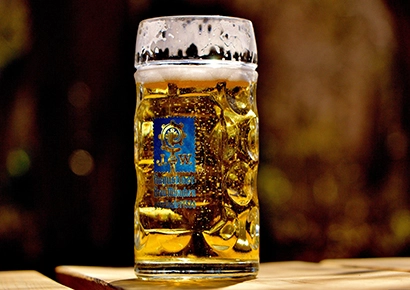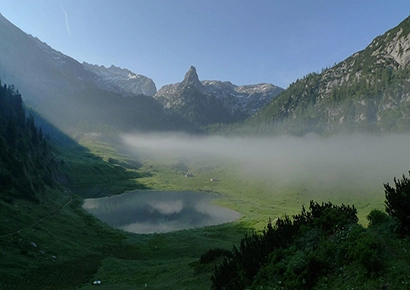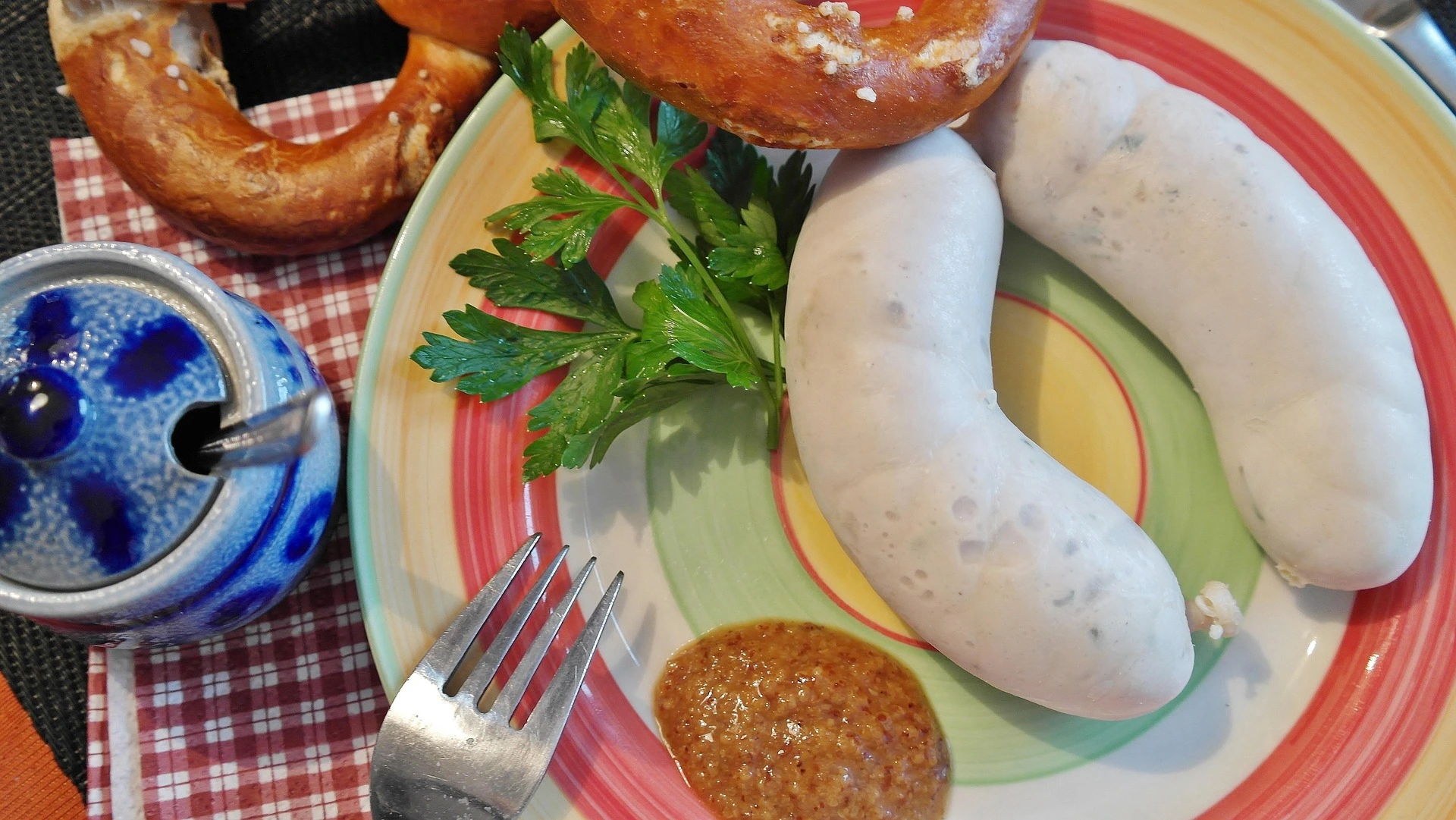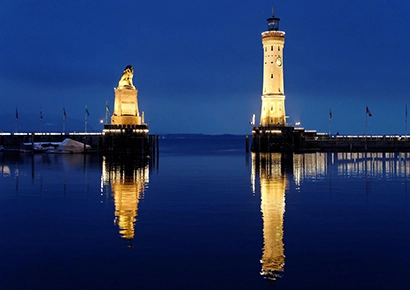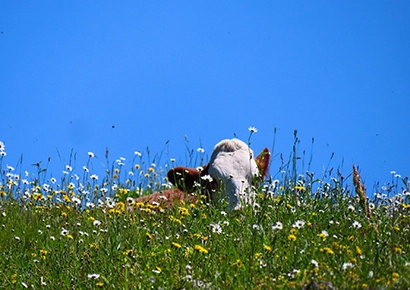Bavaria
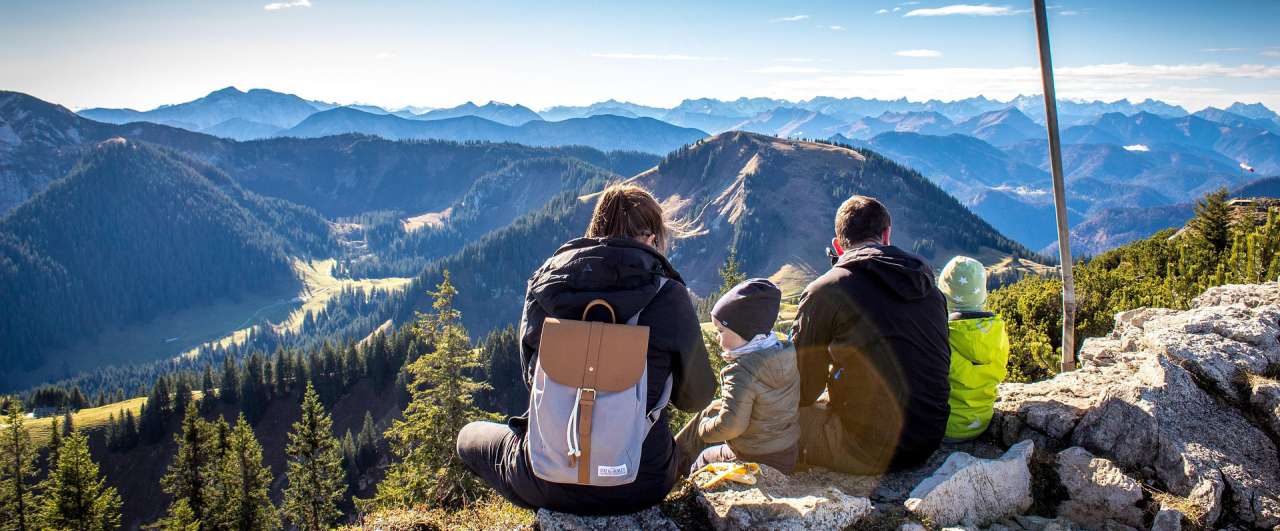
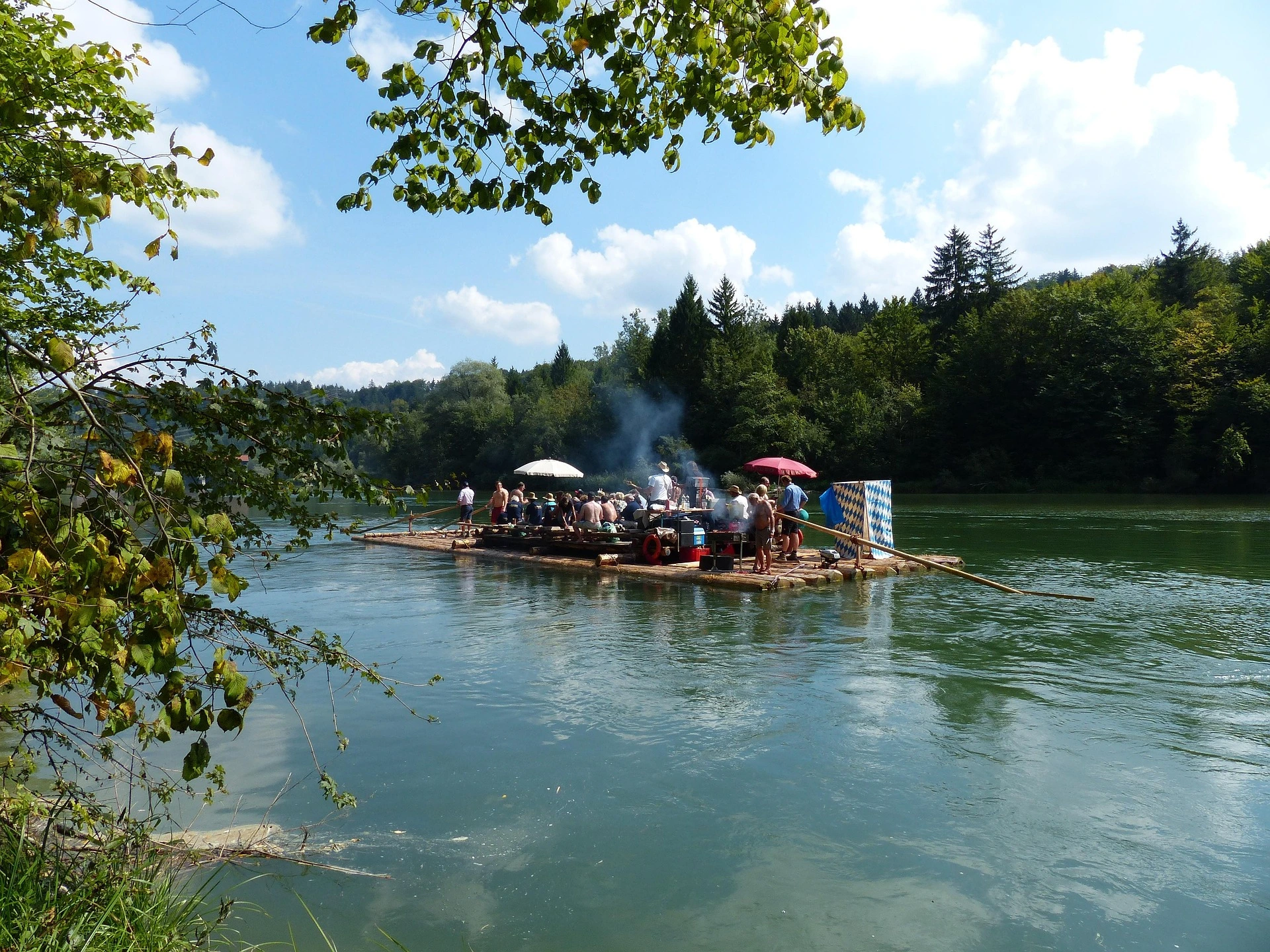
Isarfloss Angermeier – A Few Unforgettable Hours of Bavarian Joy
As part of the IGCA Congress 2026 in Germany, we’ll treat our international guests to a truly unique experience: a traditional raft ride on the Isar with Isarfloss Angermeier. But this won’t be just any outing – it will be a few extraordinary hours filled with music, laughter, and the unmistakable charm of Bavarian hospitality.
On original wooden rafts, we’ll glide through the scenic Isar valley, accompanied by hearty snacks, live tunes, and the thrill of the famous raft slides. It’s a celebration of nature, tradition, and togetherness – and a joyful showcase of what makes Bavaria so special.
It’s about sharing Bavarian lifestyle with the world. With our guests from across the globe, we’ll raise a toast to community, culture, and the kind of Gaudi that stays in your heart long after the river ride ends.
A few hours. A thousand smiles. A memory that will last.
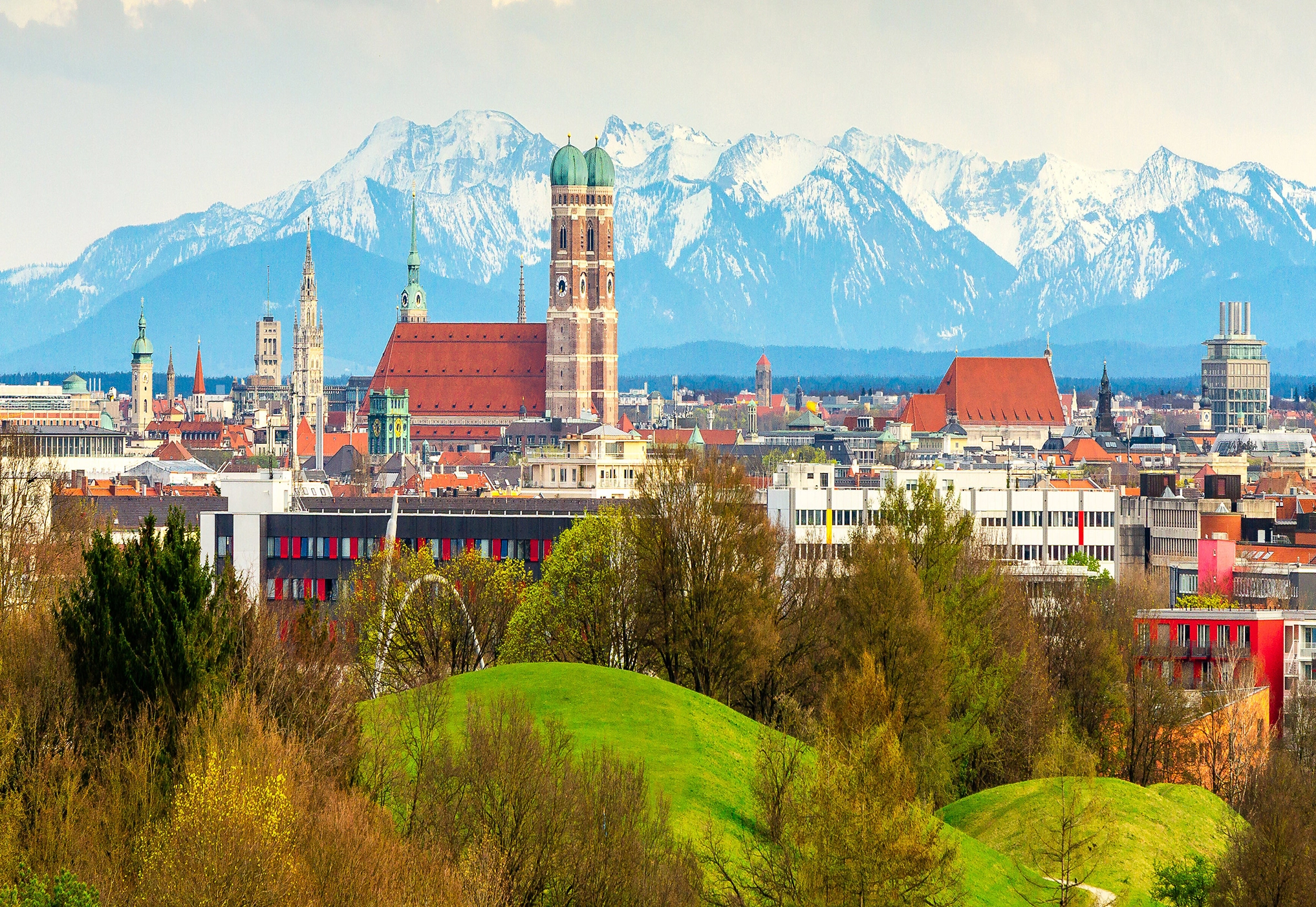
Munich – A City of Heritage and Innovation
Munich, the capital of Bavaria, looks back on a long and formative history. In 1158, the city was granted its official charter and quickly developed into a major cultural centre under the rule of the Wittelsbach dynasty.
The 19th century, following the establishment of the Kingdom of Bavaria, marked a golden era for Munich, with magnificent architecture and a flourishing scene of art and science.
Today, Munich successfully blends tradition and modernity. It is known not only for its historic buildings like the Royal Residence and Marienplatz, but also for its vibrant arts scene and numerous museums.
In industry, Munich has established itself as a leading economic hub. Global corporations such as BMW, Siemens, and Allianz shape the city’s business landscape. Munich holds a strong international position in technology, automotive, and finance, while its mechanical engineering, media, and IT sectors further contribute to its economic strength.
Today, Munich is considered one of the most liveable cities in the world – a magnet for tourists, entrepreneurs, and creatives from across the globe.
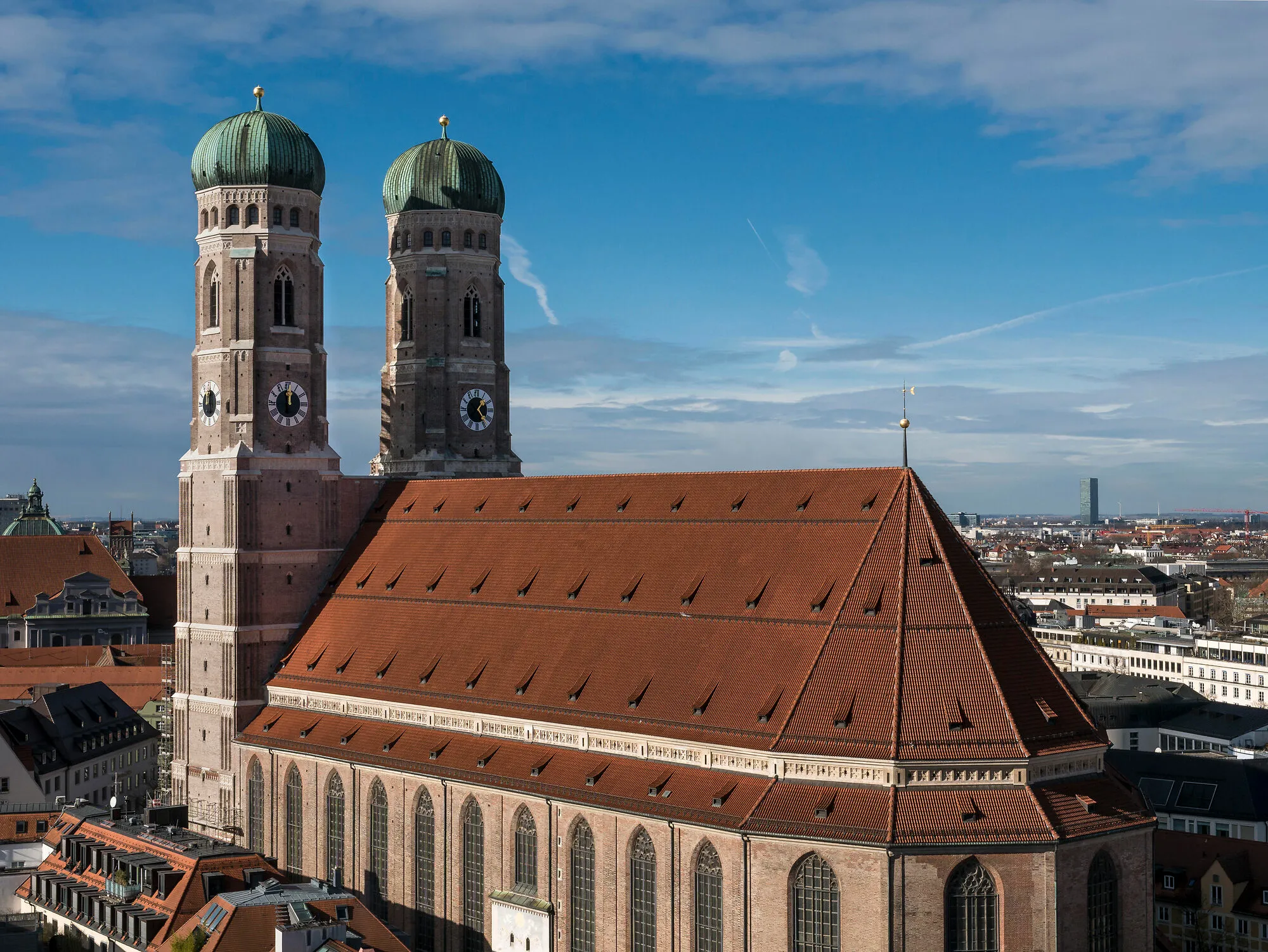
Frauenkirche – The Soul of Munich’s Skyline
Rising proudly in the heart of Munich, the Frauenkirche – Cathedral of Our Dear Lady – is more than just a Gothic masterpiece. It is a symbol of the city’s spirit, resilience, and timeless beauty. Built in the 15th century by master builder Jörg von Halsbach, this majestic brick cathedral was completed in an astonishing 20 years, a testament to the ambition and craftsmanship of its era.
Its twin towers, crowned with distinctive domes, define Munich’s skyline. At 98.57 metres tall, they are protected by a city regulation that forbids any new building from surpassing their height – a tribute to the cathedral’s enduring significance and its role as a visual anchor in the urban landscape.
Step inside, and you’ll find a serene, light-filled interior that invites reflection and awe. The Frauenkirche has witnessed centuries of history: royal ceremonies, quiet prayers, and the daily rhythm of life in Bavaria’s capital. It stands as a quiet guardian over the bustling city, reminding visitors and locals alike of Munich’s deep-rooted heritage.
Whether bathed in golden sunlight or silhouetted against a dramatic sky, the Frauenkirche remains one of Munich’s most beloved landmarks – a place where history, faith, and architecture converge in perfect harmony.
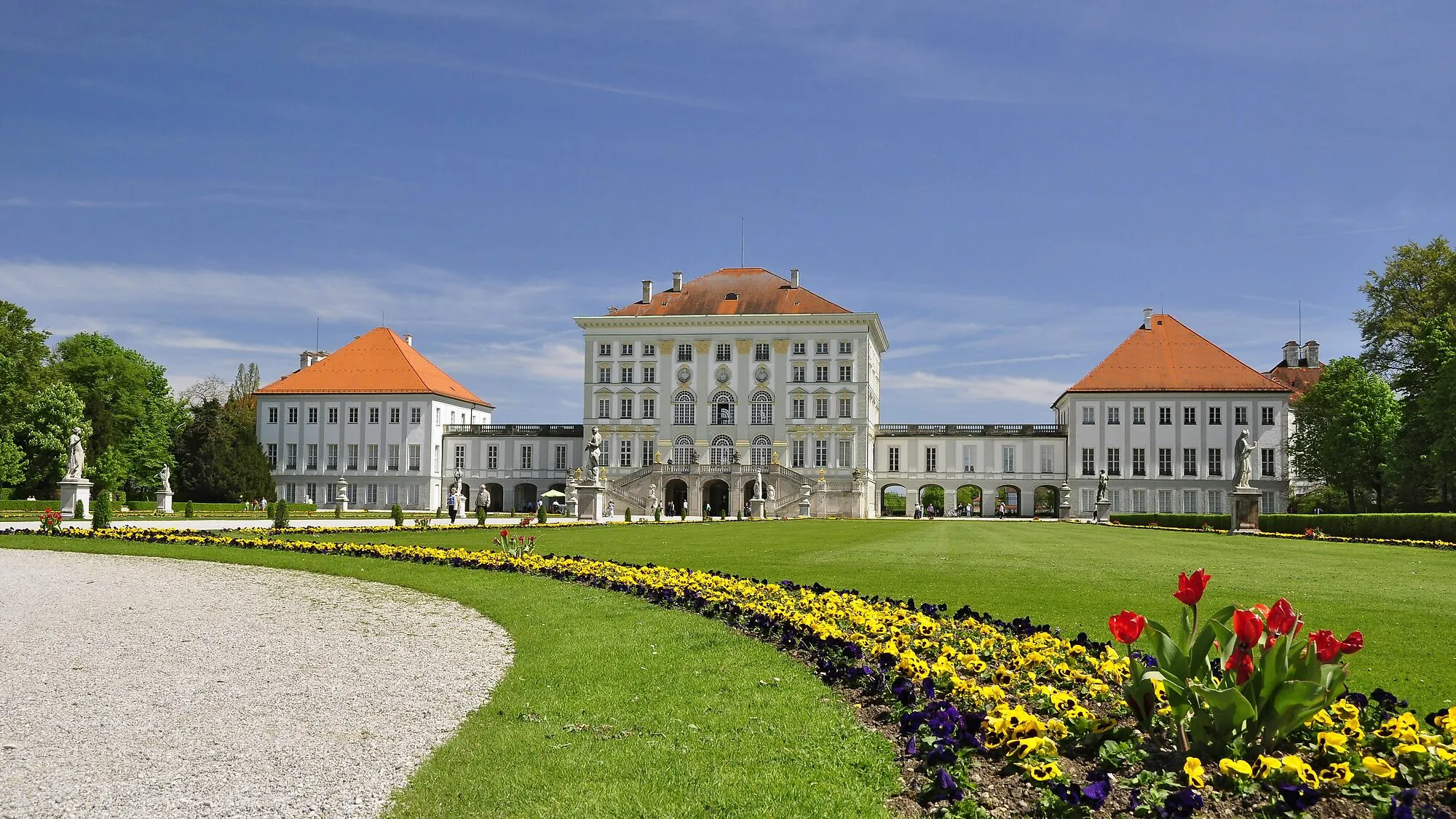
Nymphenburg Palace – A Symphony of Elegance and History
In the western part of Munich, where the city begins to breathe more quietly, lies one of Europe’s most magnificent Baroque treasures: Nymphenburg Palace. Commissioned in 1664 by Elector Ferdinand Maria and his wife Henriette Adelaide to celebrate the birth of their son Max Emanuel, this palace is not just a residence – it is a love letter to grandeur, beauty, and Bavarian heritage.
With its sweeping façade, opulent halls, and delicate stucco work, Nymphenburg invites visitors into a world of regal splendour. The Stone Hall, with its soaring ceiling and frescoes, radiates majesty, while the birth chamber of King Ludwig II whispers stories of a monarch whose dreams shaped the very image of romantic Bavaria.
But the magic of Nymphenburg extends far beyond its walls. The palace is embraced by an expansive park that feels like a living canvas – canals gliding through manicured lawns, sculptures nestled among ancient trees, and hidden gems like the Amalienburg, a Rococo jewel of playful elegance.
Today, Nymphenburg is more than a historical site. It is a place where time slows down, where art and nature dance in harmony, and where every visitor becomes part of a centuries-old story. Whether strolling through the gardens, admiring the royal carriages in the Marstallmuseum, or simply soaking in the serenity, one cannot help but feel the quiet majesty that still lingers in the air.
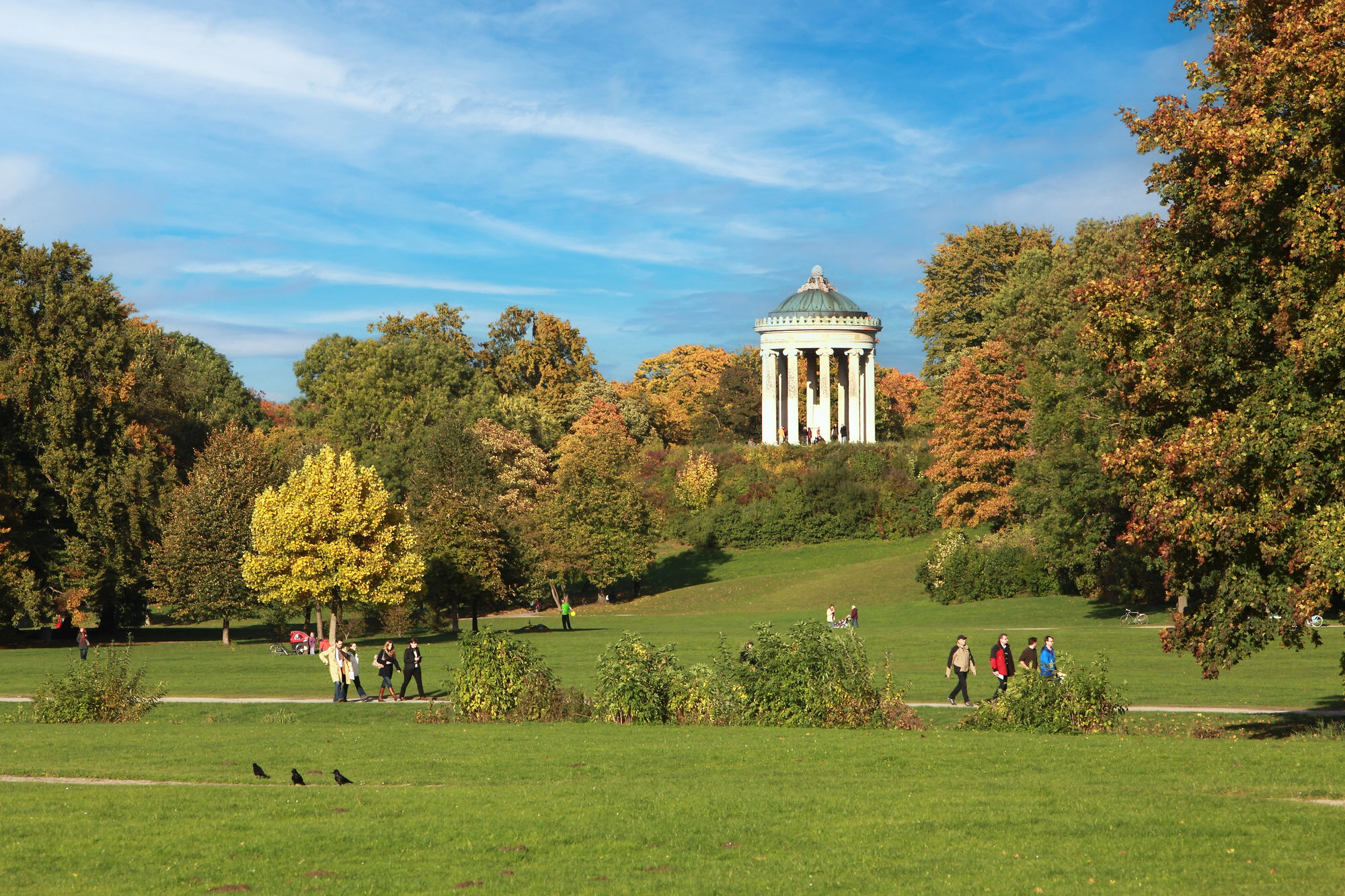
The English Garden – Munich’s Green Heartbeat
Right in the middle of Munich pulses one of the world’s largest urban parks: the English Garden. Stretching over 5.5 kilometres – the size of around 640 football fields – this lush oasis connects the wild beauty of the Isar meadows with the historic charm of the city centre.
Created more than 225 years ago by Elector Karl Theodor as a gift to the people, the park was once called “Theodor’s Park” – but the name “English Garden” soon took root, reflecting its natural, flowing landscape design.
Today, it’s a place where locals and visitors alike come to breathe, move, and celebrate life. Surfers from around the globe ride the legendary Eisbach wave year-round – the largest and most consistent river wave in the world. Joggers, picnickers, musicians, and sunseekers fill the meadows, creating a vibrant tapestry of everyday joy.
And once a year, tradition takes centre stage: the Kocherlball at the Chinese Tower. Revived in 1989, this early-morning folk dance recalls the 19th-century gatherings of Munich’s domestic workers – a celebration of community, music, and Bavarian spirit.
For our IGCA2026 guests, the English Garden will be more than a park. It will be a living showcase of Bavarian lifestyle – where nature, culture, and pure Lebensfreude come together under the open sky.
It’s not just green. It’s alive. It’s Munich.
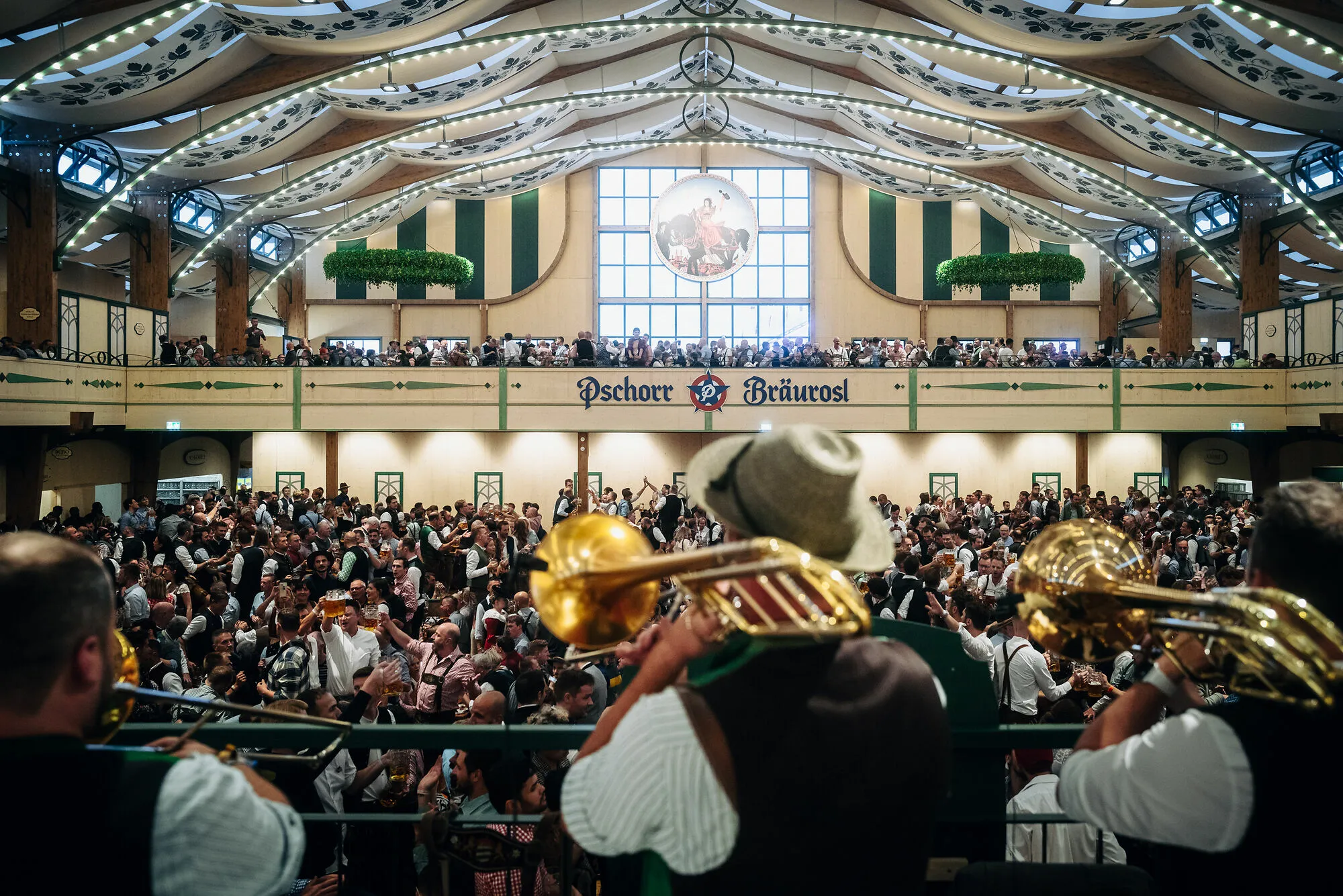
The Epicentre of Bavarian Joy
Every year, when the first keg is tapped and the mayor shouts “O’zapft is!”, Munich transforms into the beating heart of Bavarian celebration. Welcome to the Oktoberfest – the world’s largest folk festival and the undisputed highlight of the Bavarian calendar.
Held on the historic Theresienwiese, named after Princess Therese of Saxe-Hildburghausen, this legendary event began in 1810 with a royal wedding and a horse race. Today, it draws over 6 million visitors from every corner of the globe, all united by one thing: the pursuit of pure, unfiltered Lebensfreude.
For two glorious weeks, the Wiesn becomes a sea of music, laughter, and clinking beer mugs. In over a dozen massive beer tents, specially brewed Wiesn beer flows freely, accompanied by traditional Bavarian bands, hearty food, and the joyful swirl of Dirndls and Lederhosen. Outside, the festival grounds burst with colourful rides, parades, and cultural spectacles that turn every moment into a celebration.
For our IGCA2026 guests, the Oktoberfest will be more than a visit – it will be a cultural immersion into the soul of Bavaria. This is where tradition meets exuberance, where strangers become friends, and where the spirit of Bavaria shines brightest.
It’s not just a festival. It’s a feeling. It’s the Wiesn. It’s Bavaria at full volume.
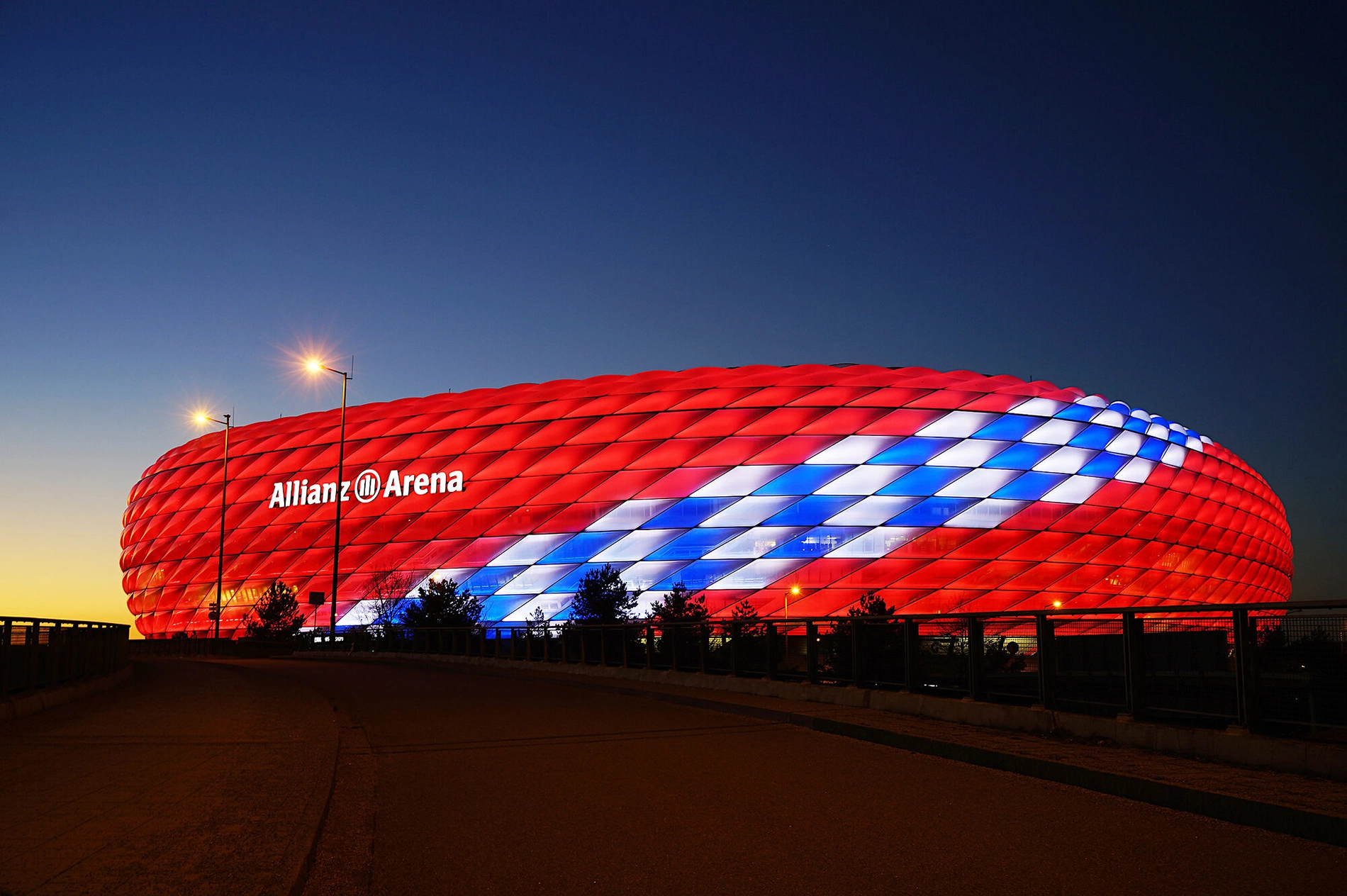
Allianz Arena – Where Legends Are Made
In the north of Munich, a futuristic marvel rises from the ground like a glowing beacon: the Allianz Arena. Since its opening in 2005, this architectural masterpiece has become one of Europe’s most iconic football stadiums – and a symbol of passion, pride, and unforgettable moments.
Home to the world-renowned FC Bayern Munich, the Arena is more than just a venue for matches. It’s a cathedral of sport, where fans from across the globe gather to witness greatness unfold. The roar of the crowd, the tension before kickoff, the eruption of joy after a goal – every game here is a spectacle of emotion.
What makes the Allianz Arena truly unique is its striking façade: a shell of inflated ETFE panels that can light up in brilliant red, white, or blue depending on the occasion. At night, it glows like a beating heart of the city, drawing visitors in with its magnetic presence.
Inside, the stadium offers state-of-the-art facilities, impeccable design, and an atmosphere that electrifies even the most seasoned football fans. It has hosted legendary Champions League nights, dramatic Bundesliga battles, and international tournaments that have etched themselves into football history.
To step into the Allianz Arena is to feel the pulse of Munich – a city that lives and breathes football. It’s where dreams are chased, heroes are born, and the spirit of the game comes alive.
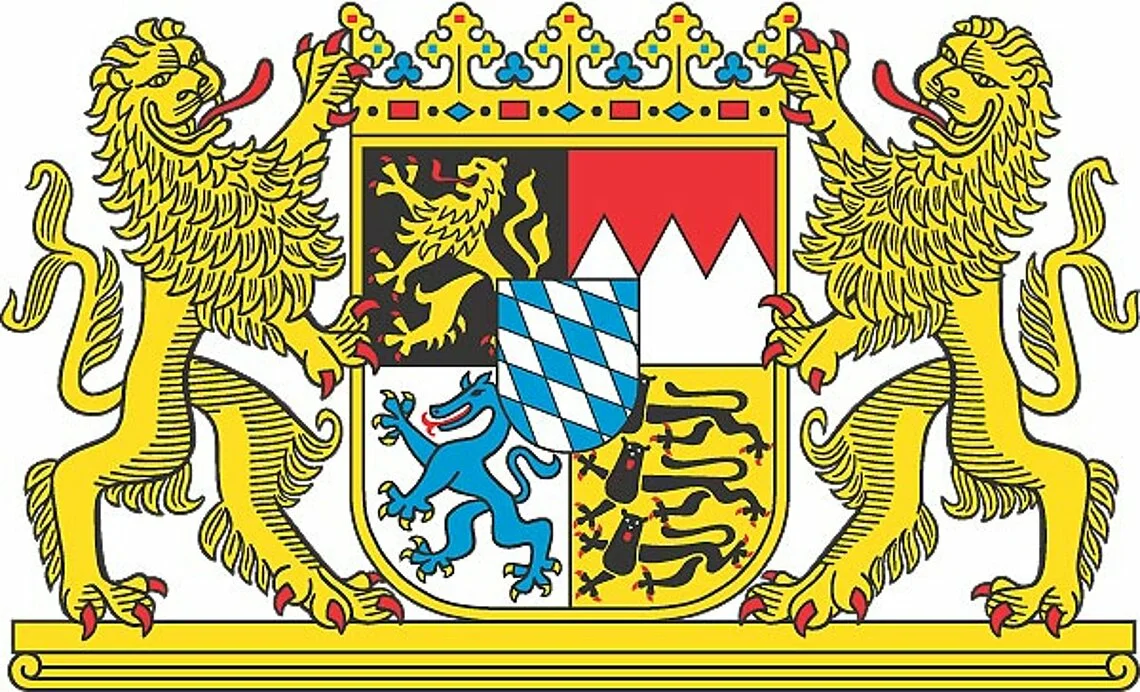
A Brief History of Bavaria
Bavaria’s roots trace back to the 6th century, when the region emerged as a stem duchy under the rule of the Agilolfing dynasty. The first known duke, Garibald I, governed under Frankish overlordship, marking the beginning of Bavaria’s political identity.
During the Middle Ages, Bavaria became a powerful territory under the House of Wittelsbach, which ruled from 1180 to 1918. The duchy played a key role in religious and political conflicts, especially during the Thirty Years’ War.
In 1806, Bavaria was elevated to a kingdom under Napoleon’s influence. After World War I and the fall of the monarchy, it became the Free State of Bavaria in 1918.
After World War II, Bavaria was restructured under American occupation and became part of the Federal Republic of Germany in 1949.
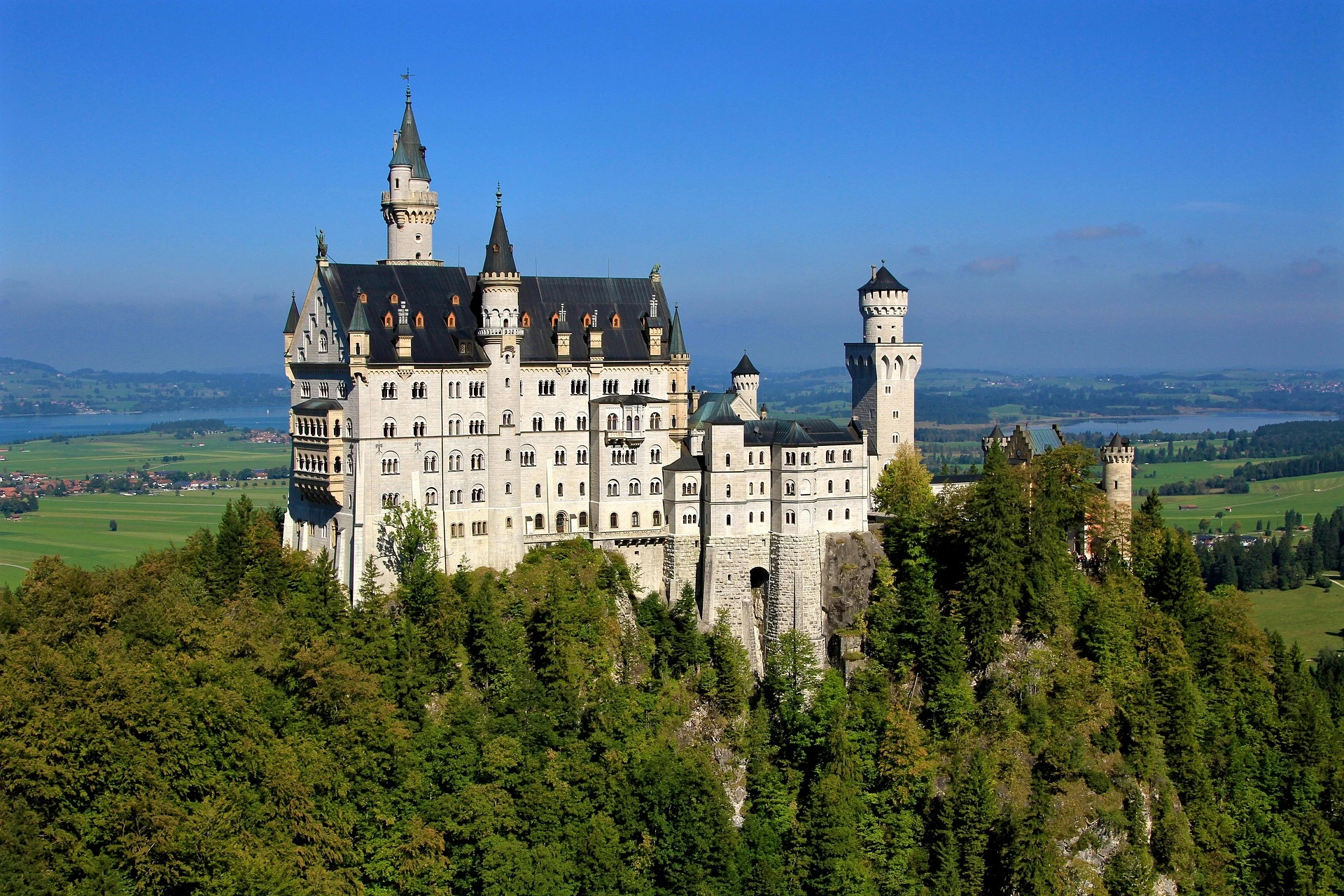
Neuschwanstein Castle – A Fairytale Come to Life
Nestled in the breathtaking alpine landscape near Schwangau, close to Füssen in the Allgäu region, Neuschwanstein Castle rises like a dream from the mountains. With its soaring towers, romantic silhouette, and dramatic setting, it is one of the most iconic and beloved castles in the world.
Commissioned in 1869 by King Ludwig II of Bavaria – often called the “Fairytale King” – Neuschwanstein was designed as a personal retreat, a place where the monarch could escape into a world of myth, music, and medieval fantasy. Inspired by the romantic ideals of the Middle Ages and the operas of Richard Wagner, the castle’s architecture blends Gothic revival with whimsical imagination.
Every detail of Neuschwanstein speaks to Ludwig’s vision: grand halls adorned with murals of legendary heroes, ornate chambers echoing with artistic splendour, and panoramic views that stretch across lakes and peaks. It’s no wonder that Walt Disney chose Neuschwanstein as the model for Sleeping Beauty’s castle – a symbol of enchantment recognised around the globe.
Today, Neuschwanstein welcomes millions of visitors each year, all drawn by its magical aura and timeless beauty. Whether shrouded in mist or bathed in golden sunlight, the castle never fails to stir the heart and ignite the imagination.
Aha Moments from Bavaria
Discover Bavaria – Land of Legends, Laughter and “Mia san mia”
Welcome to Bavaria – where cows graze with Alpine elegance, where sausages aren’t forked but zuzelt with pride, and where tradition is not a relic, but a living, breathing way of life.
Bavarians are known for having a mind of their own – not stubborn, but spirited. Their motto? “Mia san mia.” It means “We are who we are,” a declaration of identity, pride and quiet confidence. You feel it – not read it – when you stroll through Munich’s boulevards, wear traditional attire with no occasion, or clink steins with a stranger who quickly becomes a friend.
Oktoberfest – A Toast to Togetherness
Every September, Munich’s Theresienwiese blossoms into the world’s largest folk festival. It began in 1810 as a royal wedding celebration, and today it’s a global gathering with a frothy head of joy.
“O’zapft is!” rings out as the first barrel is tapped, and over six million guests from every corner of the world raise their glasses. It’s more than a party – it’s Bavaria in full voice: bustling beer tents, lederhosen dancing with dirndls, and traditions proudly shared with delight.
Oktoberfest is not a spectacle for the camera; it’s a cultural heartbeat, pulsing with warmth, music and shared stories.
Alpine Majesty – Where Nature Meets Soul
Southward, the mountains rise with breathtaking drama. Bavaria’s Alpine world isn’t just scenery – it’s an invitation to awe. The Zugspitze peers across three countries, while the Wendelstein glows in twilight gold. Here, the peaks speak and the valleys listen.
The air? As crisp as a freshly poured Helles. The view? A thousand postcards in one. And sometimes, if you’re lucky, you’ll hear an alphorn echo — as if the mountains themselves were greeting you.
Only in Bavaria – Quirks and Charm
Did you know that Nuremberg’s tiny sausages were once designed to fit through keyholes — so hungry locals could sneak a bite after the city gates closed? Truth or legend, it’s delicious either way.
Or that King Ludwig II, the dream-weaver of Neuschwanstein Castle, built it not for tourists, but as a retreat for his Wagnerian fantasies? Today, the fairytale stone walls welcome millions — all seeking a glimpse of magic.
And in Munich, surfing isn’t reserved for beaches. The Eisbach wave cuts through the city centre, where brave souls ride river swells under the watchful gaze of historical facades.
Bavaria Grows on You – Quite Literally
For IGCA guests, Bavaria isn’t a showcase. It’s a living canvas. In the beer garden, between bites of pretzel, or gazing over Alpine lakes, something quietly profound happens: you feel connected.
Tradition meets innovation. Hospitality meets hilarity. And landscapes meet the soul.
So, dear guests: Grüß Gott and Servus! Bavaria is ready to welcome you with open arms, a hearty laugh and stories best told over a beer.

